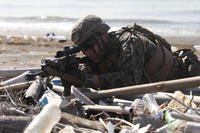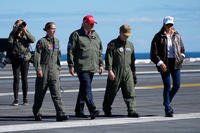On the USS Barb's penultimate patrol during World War II, the Navy submarine executed a daring nighttime surface attack against 30 Japanese warships in shallow waters off the coast of China. The Gato-class sub’s torpedoes made eight direct hits, sank three vessels and severely damaged three others, according to the Naval History and Heritage Command, earning its commander, Eugene "Lucky" Fluckey, the Medal of Honor and the crew a Presidential Unit Citation.
On its 12th and final patrol, how could the Barb possibly top that?
An outside-the-box thinker, Fluckey found his answer when the Barb was in the Sea of Okhotsk in the summer of 1945 and saw trains, likely carrying troops and supplies, rolling by on the countryside in Karafuto Prefecture, Japan.
“Now there's a target I would like to blow up,” Fluckey wondered aloud, according to a 2011 article by the U.S. Naval Institute.
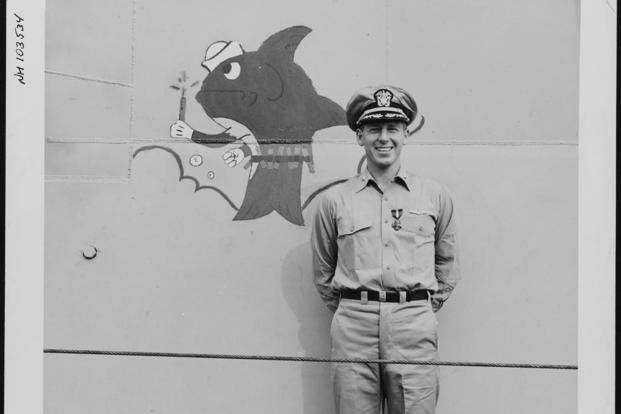
The comment caught the attention of Paul Golden "Swish" Saunders, the Barb’s chief of the boat. Saunders sat in front of a topographic map that included rail lines and began to strategize, eventually devising a plan to send a group of the Barb’s submariners onshore to plant explosives on the tracks.
Intrigued, Fluckey gave his go-ahead with some conditions. To fill the slots for the two four-man teams required for the mission, Fluckey insisted on physically fit service members who possessed good communication skills and survival instincts (in the event they were left behind and were forced to fend for themselves). He also preferred team members to be single; out of the men ultimately chosen, only third-class electrician's mate Bill Hatfield was married.
Saunders and Hatfield created a 55-pound bomb, which Saunders referred to as a "land torpedo.” They used a scuttling charge, wired it to three dry-cell batteries and placed the makeshift explosive into an empty pickle can. There was one sticking point, though: How could the submariners detonate it without risking injury or death to themselves?
Hatfield, a former railroad worker, solved the problem. He recalled how, as a boy, he used to place nuts between railroad ties, so when a train passed and the rails sagged, the resultant pressure would crack the shells. He suggested the Barb could do something similar, connecting a micro switch to the rails that would be activated by the train itself.
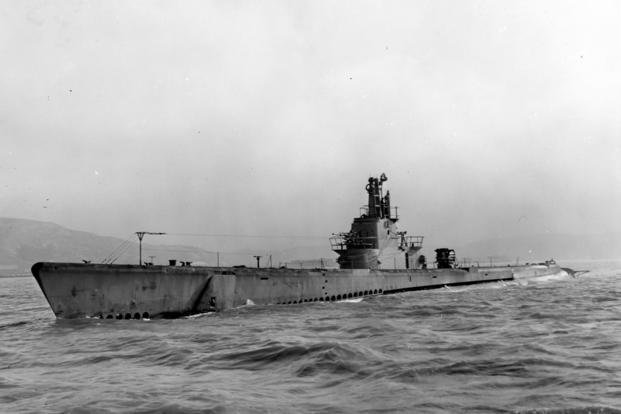
Before two rubber boats carrying the eight submariners departed the Barb -- located less than a thousand yards off the Japanese coast -- in the early morning hours of July 23, 1945, Fluckey told the ad hoc demolition team members that they had roughly three hours to complete their task before the Barb would leave, with or without them, to avoid the risk of detection.
Saunders and Lt. Bill Walker, the sub's engineering officer, led their respective boats. Two men guarded the boats, three others were deployed as sentries, and Saunders, Hatfield and Walker began hollowing out stone underneath the tracks to create space for the explosives.
As they worked feverishly, their internal clocks ticked away. They were interrupted when a train charged down the track, forcing the men to drop quickly to the ground to avoid being seen as the locomotive passed. After that near miss, Hatfield connected the bomb to the detonator as quickly as he could, then the men raced back to their boats.
"Paddle like the devil," Fluckey yelled through a megaphone. "We're leaving."
Not long after Fluckey’s comment, the bomb went off.
"The boilers of the engine blew," Fluckey, who later retired as a rear admiral, wrote in the book "Thunder Below!" "Engine wreckage flying, flying, flying up some 200 feet, racing ahead of a mushroom of smoke, now white, now black. Sixteen cars piling up, into and over the wall of wreckage in front, rolling off the track in a writhing, twisting maelstrom of Gordian knots."
The bombing capped one of the most successful runs for a sub during WWII, with the Navy crediting the Barb with destroying about 96,000 tons of enemy shipping, not to mention one train. The submariners even commemorated their most unique mission by placing a train-shaped marker at the bottom center of its battle flag.
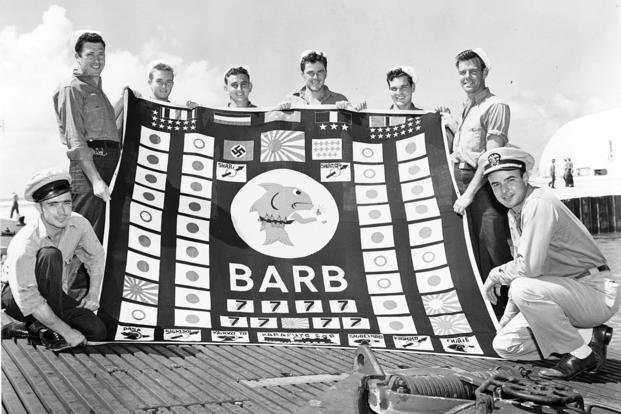
All in all, the Barb was awarded four Presidential Unit Citations, a Navy Unit Commendation and eight battle stars during the course of World War II. Decommissioned in 1954, the sub was loaned to Italy and rechristened the Enrico Tazzoli. In 1972, it was sold for scrap for $100,000 (roughly $734,000 in 2023 dollars).
"Adm. Fluckey remarked that he wished he'd known about her scrapping, as he and his crew would have bought the vessel, returned it to the U.S. and kept it as a museum submarine," War History Online noted in a 2022 article.
The spirit of the Barb will live on, though. In 2020, the Navy announced its name will be bestowed upon a new Virginia-class sub in the coming years.
-- Stephen Ruiz can be reached at stephen.ruiz@military.com.
Want to Know More About the Military?
Be sure to get the latest news about the U.S. military, as well as critical info about how to join and all the benefits of service. Subscribe to Military.com and receive customized updates delivered straight to your inbox.

